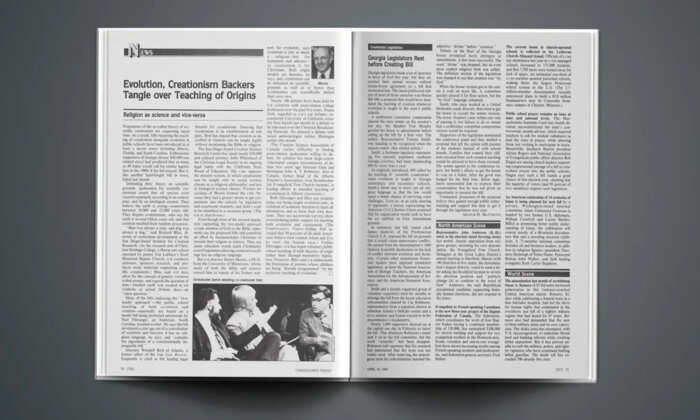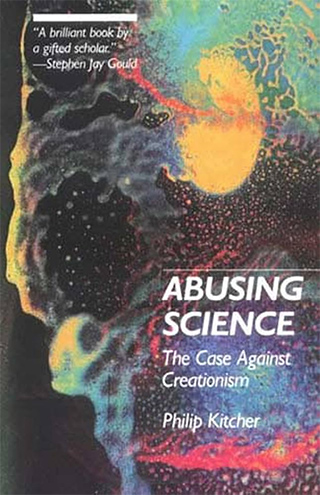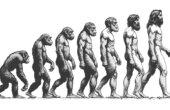Not Every Idea Deserves Equal Time

The following text was first published in Philip Kitcher’s 1982 book “Abusing Science,” amid fierce battles over “scientific creationism” in American classrooms. At the time, activists — most famously Norma and Mel Gabler in Texas — were pressing school boards and publishers to give their views “equal time” alongside evolution. Framed in the language of fairness and tolerance, the plea struck a sympathetic chord with many citizens who lacked the scientific background to see that creationism and evolution were not genuine scientific rivals.
The danger, then as now, was that the call for “balance” was rhetorically powerful but intellectually hollow. “Ideas have to earn the right to our respect,” Kitcher writes in the book, borrowing John Dewey’s image of open-mindedness as a welcome mat, not a wide-open door. Tolerance, in other words, requires evidence and coherence, not the equal airing of every claim.
The broader chapter from which this text is excerpted explains why creationist appeals resonated: mistrust of scientific elites, frustration with unresponsive education policy, and the caricature — fueled by misreadings of Thomas Kuhn — that science is a closed-minded “club.” Against this backdrop, Kitcher sketches what genuine tolerance in science looks like: Pursue the best-supported theories, allow minority views that show promise, but reject those that fail the test.
Creationism never met that standard: “Where the appeal to evidence fails so completely, the appeal to tolerance cannot succeed,” writes Kitcher. The pattern, of course, has not ended with creationism.
—The Editors
Creationists are able to exploit a number of popular opinions. In recent years, the public image of the scientific community has become somewhat tarnished. Professional scientists have not done a very good job of popularizing the complicated ideas of contemporary research and making the character of their activity accessible to the general public (there are encouraging signs that some scientists are now taking more seriously the enterprise of explaining the principal ideas of contemporary science).
Second, there is considerable popular mistrust of educational policy. Despite my conviction that the Gablers were often wrong in their campaign to reform textbooks, I found it impossible to read an account of their strenuous efforts without coming both to admire their perseverance and to sympathize with their predicament. For if James Hefley’s depiction of the situation is even approximately correct, it is clear that the processes of curricular design and textbook choosing, the processes the Gablers tried to affect, were insensitive to the opinions of parents. At least in this case, educational policymakers and textbook publishers were not receptive to criticism from parents, and there is some reason to doubt that their attitude would have been different if the complaints voiced had had a better rationale than those that the Gablers presented. Like most parents, I would hope that my own concerns about the education of my children would not be dismissed with a superior smile.

The third source of the idea that the scientific establishment is closed-minded is a philosophical picture of the nature of science. Thomas Kuhn’s book “The Structure of Scientific Revolutions” has probably been more widely read — and more widely misinterpreted — than any other book in the recent philosophy of science. The broad circulation of his views has generated a popular caricature of Kuhn’s position. According to this popular caricature, scientists working in a field belong to a club. All club members are required to agree on main points of doctrine. Indeed, the price of admission is several years of graduate education, during which the chief dogmas are inculcated. The views of outsiders are ignored. Now I want to emphasize that this is a hopeless caricature, both of the practice of scientists and of Kuhn’s analysis of the practice. Nevertheless, the caricature has become commonly accepted as a faithful representation, thereby lending support to the Creationists’ claims that their views are arrogantly disregarded.
Would a truly undogmatic scientific community take Creationism seriously? Setting on one side for the moment the issue of how closed-minded the scientific community actually is, let us inquire how it would proceed if it were genuinely tolerant.
Respect for the truth does not require one to take seriously ideas simply because they are popular or backed by influential people.
I begin from a simple and obvious point. Genuine intellectual tolerance is rooted in a desire to learn the truth. For a person or a group, to be genuinely undogmatic is to recognize the possibility that the doctrines that are presently accepted, even if they are deeply valued and even if they are extremely well confirmed, may for all that be mistaken. Those who wish to arrive at the truth will be on the watch for potential problems with the opinions they espouse. They will be sensitive to the deficiencies of their views and will encourage discussion of alternatives that promise to correct those deficiencies. Yet respect for the truth does not require one to take seriously ideas simply because they are popular or backed by influential people. Once it has become clear that a proposal makes no contribution to our understanding, we are not compelled by tolerance to give it further attention.
At any stage in the history of inquiry, we can divide claims into three major categories. In the first are those that are best justified by the evidence we have. These may not be entirely free of problems, but confirmation for them is stronger than for any alternative.
So, for example, Einstein’s special theory of relativity currently enjoys greater support from the evidence than any alternative theory about the dynamics of bodies. A second category consists of claims that are less well justified than some rivals but merit our attention because of their ability to resolve some outstanding puzzle. If we had to label these claims as true or false, we would have to reject them. (For they are less well supported by the evidence than the rival view that we accept. Because the views are genuine rivals, incompatible claims, it cannot be that both are true. So we have to reject at least one.) Nevertheless, the heterodox views have some promise. There is some question, or group of questions, that they can tackle more successfully than their orthodox rivals, so that we may reasonably suspect that they may guide us in our search for a better view. Hence these claims, while not worthy to be accepted as true, earn entry into the forum of ideas. The final category comprises the residue. These are claims that, given the available evidence, have nothing going for them. From the standpoint of the present evidence, they are likely neither to be true nor to advance our search for the truth.
Open-mindedness is not incompatible with having opinions. Each person (or group) is constantly required to make decisions, and in decision making we use the views we hold about the way the world works. What is crucial to open-mindedness is the way in which opinions are held. An (ideal) open-minded scientific community would carefully weigh the evidence and accept only the best-supported claims. It would continue to discuss those claims that fall into my second category, making sure that any insights they contain are not lost in the enthusiasm for developing the orthodox position. Claims belonging to the third category would be shelved. Moreover, all these evaluations would be subject to revision; the open-minded community would admit that new findings can affect its categorization, perhaps causing it to dust off some claim long on the shelf or to reject a claim that has enjoyed popularity.
Open-mindedness is not incompatible with having opinions.
In considering the rationality of scientific investigation it is often tempting to look just at the behavior of individuals. Historians and philosophers sometimes attempt to understand the acceptance of a new theory by examining the evidence that led some prominent figure to accept it. (For example, they might ask what evidence Darwin had for accepting the theory of evolution by natural selection.) But to focus only on the attitudes of individuals and the evidence for those attitudes is to miss important questions about scientific inquiry. An individual must concentrate on one line of research, the avenue that appears most promising in the light of the available evidence. But the community can be more flexible. It can encourage pursuit of a number of alternatives, expending most of its resources on articulating the position that is best supported, but allowing views with some promise to develop themselves.
A group of scientists deeply committed to discovering the truth would manage its affairs by a division of labor: Most members of the group would be encouraged to work further on the theory that is best justified by the evidence. But at the same time some would be encouraged to actualize whatever promise alternative theories may have, and others periodically to examine the categorization of theories in light of changing evidence. (Perhaps it is also important that the history of science be studied, not only because “dead” theories are sometimes resurrected but also because history is a powerful reminder that the mightiest theories may fall.) If there should come a time when the evidence is inconclusive between two rival theories, then roughly equal numbers of (equally talented) scientists should be encouraged to work on each of the rivals. A community that conducted itself in this fashion (perhaps by creating professional incentives to promote an optimal division of labor) would be, I suggest, both rational and undogmatic. (Note that the individual members of such a community may be quite single-minded in their pursuit of the particular line of research “assigned” to them.)
I have tried to give a sketch of what undogmatic science would be like. We can now take up two questions. Is the actual practice of the natural sciences at all similar to the imagined behavior of my ideally rational and tolerant community? Would an ideally rational and tolerant community, given the evidence available today, commit any of its resources to discussing and developing the Creationist program?
There is some indication that, at least at some times, groups of scientists approximate the ideal just described. In 1915, Alfred Wegener, a meteorologist, suggested a new geological theory, the theory of continental drift. According to this theory, the continents have not always occupied their present positions. Rather, they were once united to form a single landmass, which was broken up at some point in the distant past. Wegener used these ideas to account for some puzzling facts about the shapes of the continents, the apparent continuity of mountain ranges on different continents, the distribution of plants and animals, past climatic conditions, and so forth. His careful attention to detail made it clear that the new theory could answer some questions that were unanswered by rival theories. However, Wegener’s proposal faced an apparently insurmountable difficulty. How do the continents move? Wegener’s own attempts to suggest a mechanism for continental motion were plainly inadequate, and the difficulty was compounded by the well-known fact that continental rock is less dense than the rock at the bottom of oceans. Geologists concluded that, for all its promise, Wegener’s theory could not be right. The “light” continents simply could not plow their way through the “heavy” oceans.
About half a century later, the new theory of plate tectonics proposed that the continents rest on huge plates that can move apart, come together, or slide past one another. In this way, the theory equipped Wegener’s proposal with the needed mechanism. It also showed how large numbers of puzzling facts could be explained if the new theory was accepted and won almost universal support for continental drift. What interests me here is not the way in which the old, discredited idea suddenly won allegiance, but how it survived. Despite the fact that continental drift had seemed impossible, Wegener’s proposal did not simply disappear from view.
Periodically, there were scientific discussions of its merits. Some geologists — including at least two respected scientists (Arthur Holmes and Alexander du Toit) — worked on developing it and published papers in its defense. Young geologists heard about the idea in geology courses. In short, professional discussion of a minority view was allowed. At times it was even fostered. Moreover, when the balance of evidence began to shift, the geological community was quick to abandon its old orthodoxy and to accept Wegener’s apparently wild idea.
When the balance of evidence began to shift, the geological community was quick to abandon its old orthodoxy and to accept Wegener’s apparently wild idea.
An ideally rational and open-minded scientific community, faced with Wegener’s theory and Wegener’s evidence, would have done what the actual scientific community actually did. Because of its ability to address some unresolved problems, Wegener’s proposal earned the right to scientific discussion. Because Wegener was clear and definite in stating his theory, his views could be discussed. Because this theory encountered a grave difficulty, it did not displace the orthodoxy of the 1920s, but it persisted as a minority view.
The contrast with Creationism is striking. Creationism does not merit scientific discussion. Creation “science” is not a promising rival to evolutionary theory. It is not integrated with the rest of science, but is a hodgepodge of doctrines, lacking independent support. It offers no startling predictions, no advance in knowledge. We cannot commend it for any ability to shed light on questions that orthodox theories are unable to answer. Nor can we praise it for offering a definite alternative that might help scientists in their quest for an improved biological or geological theory. “Scientific” Creationism has no evidence that speaks in its favor, partly because Creationists are so meticulous in leaving their doctrines blurred.
Finally, there is no excusing it on the grounds that its resources are, as yet, untapped. Ample opportunity has been provided. Numerous talented scientists of the eighteenth and early nineteenth centuries tried Creationism. Nothing has come of their efforts, or the efforts of their modern successors. Where the appeal to evidence fails so completely, the appeal to tolerance cannot succeed.
Philip Kitcher is a British philosopher who is the John Dewey Professor Emeritus of philosophy at Columbia University. He is the author of several books, including “Abusing Science,” from which this article is excerpted.



